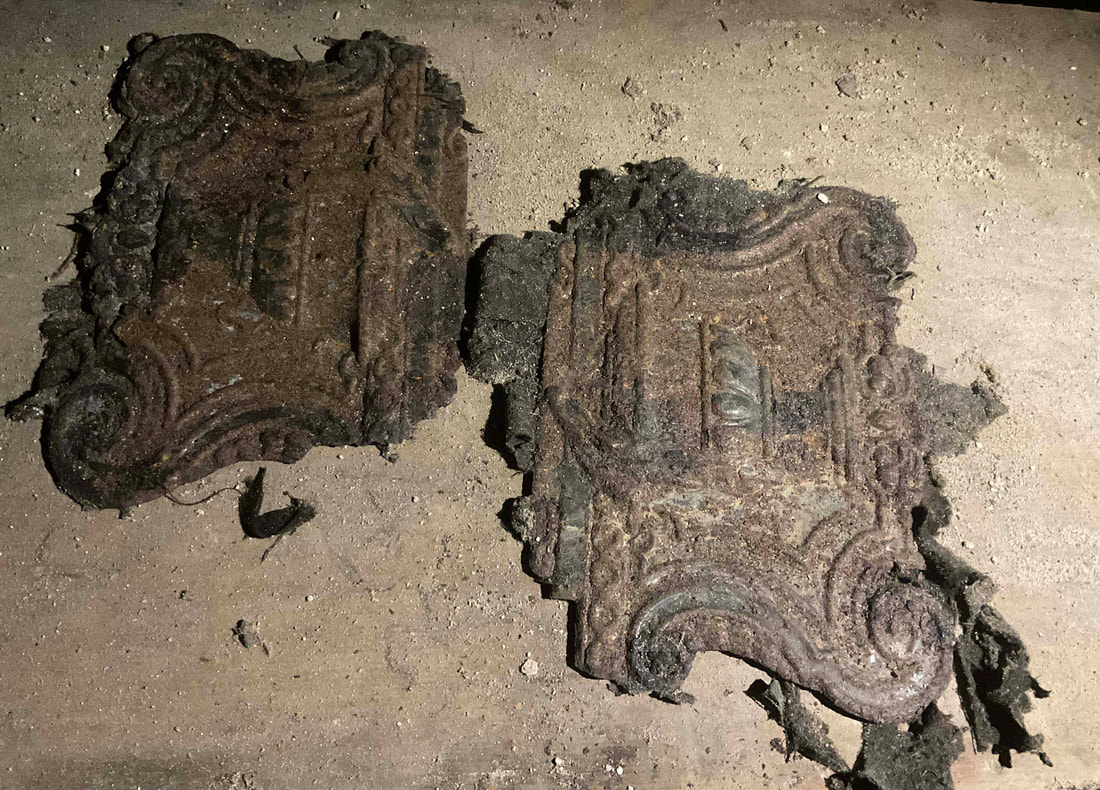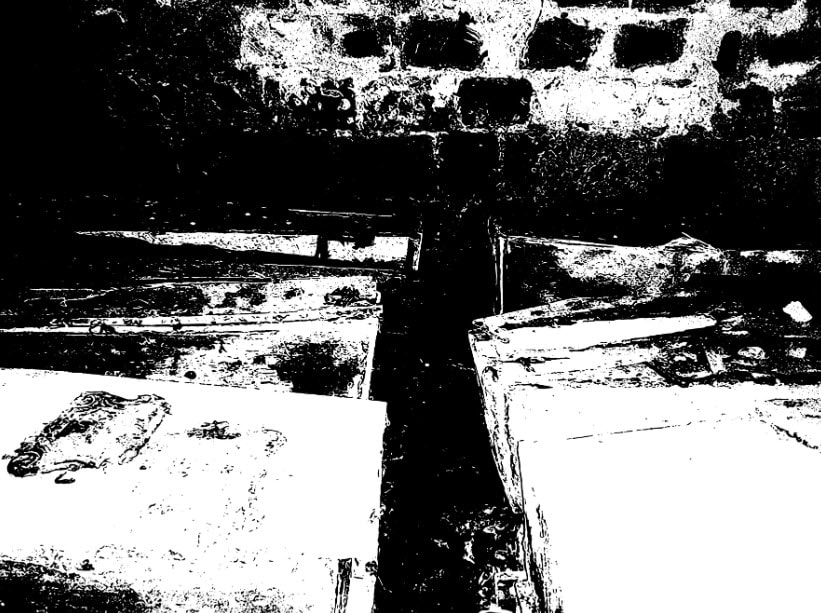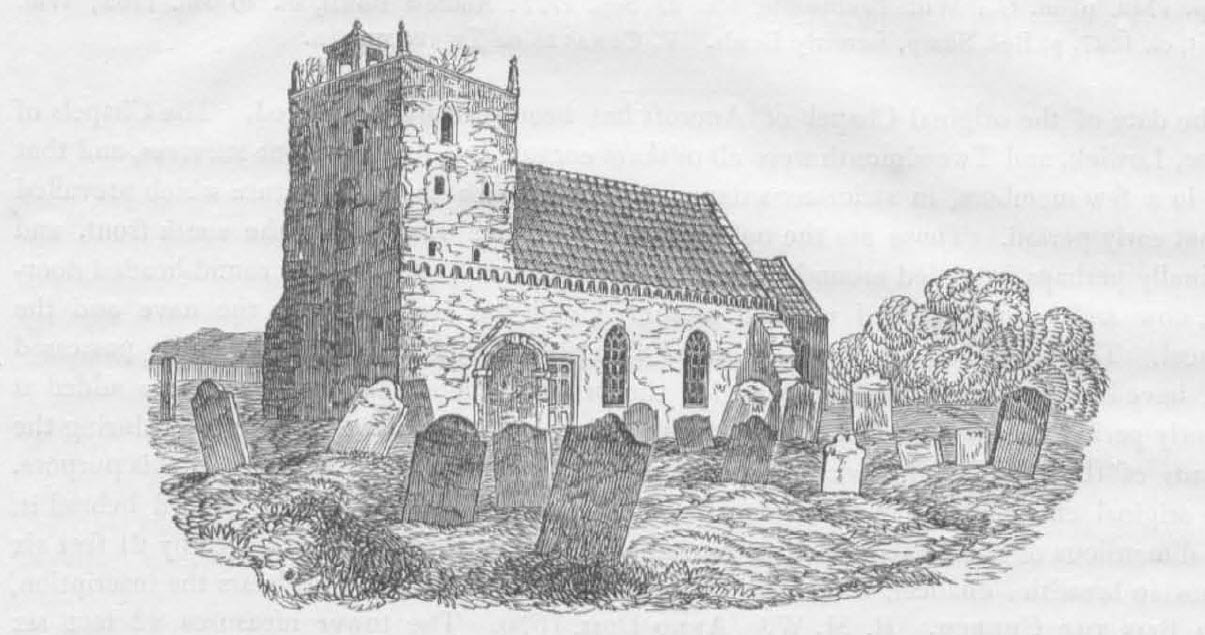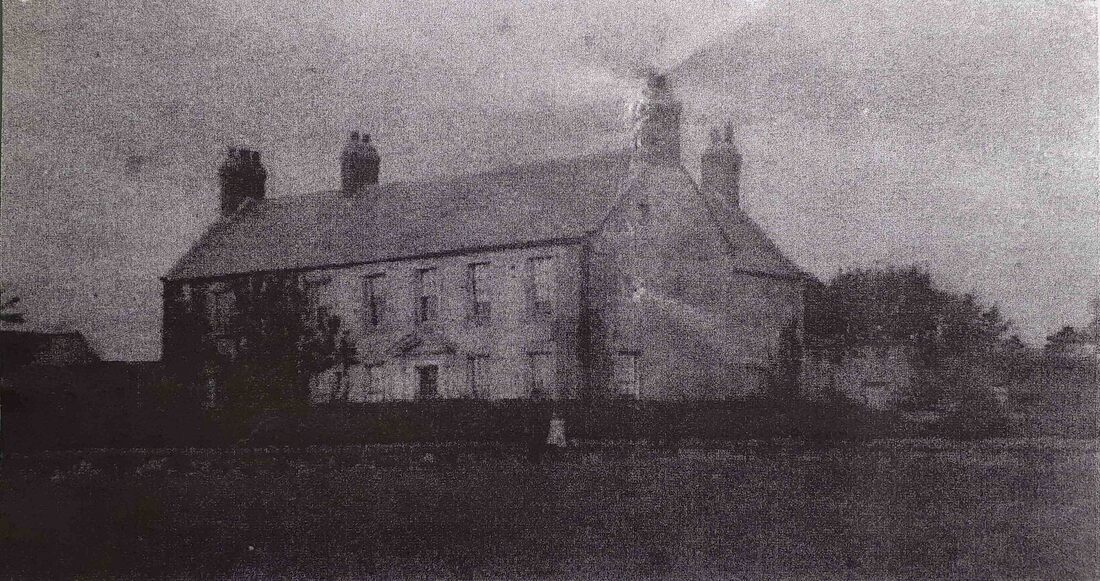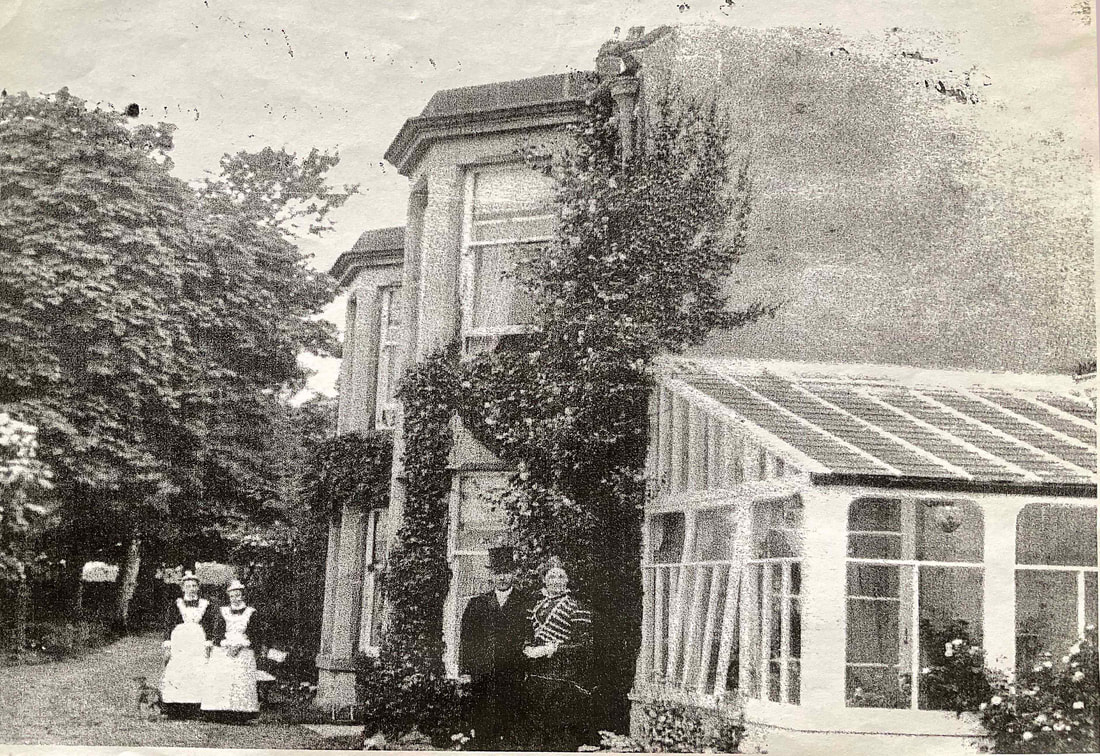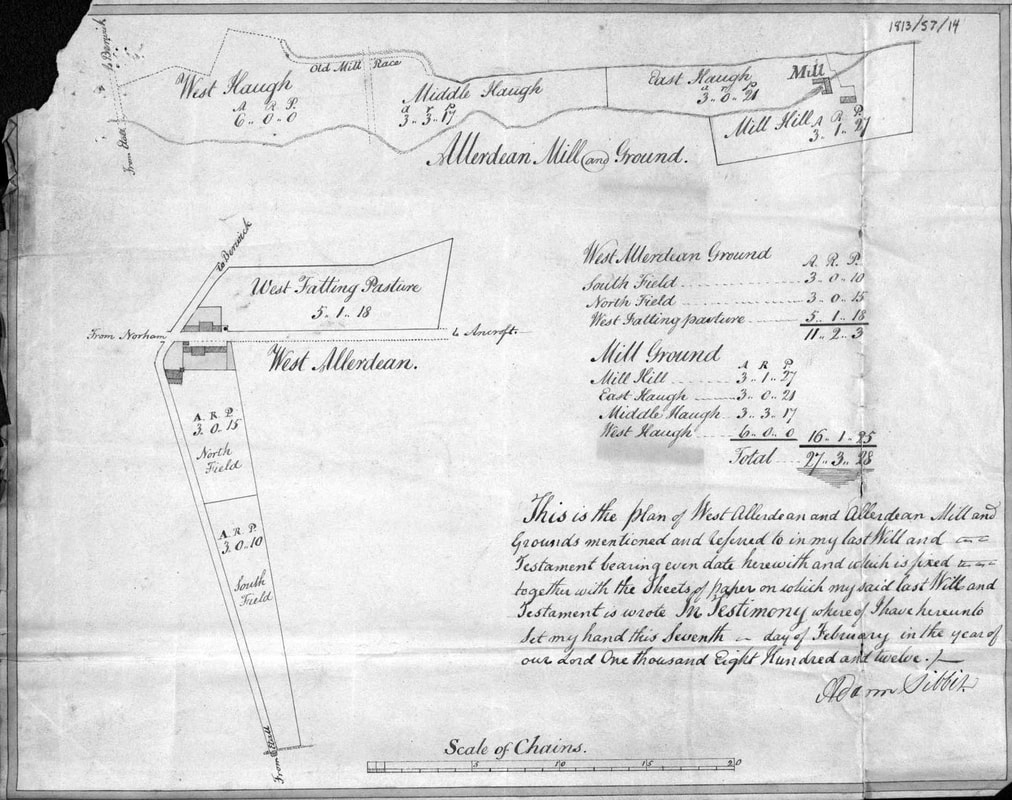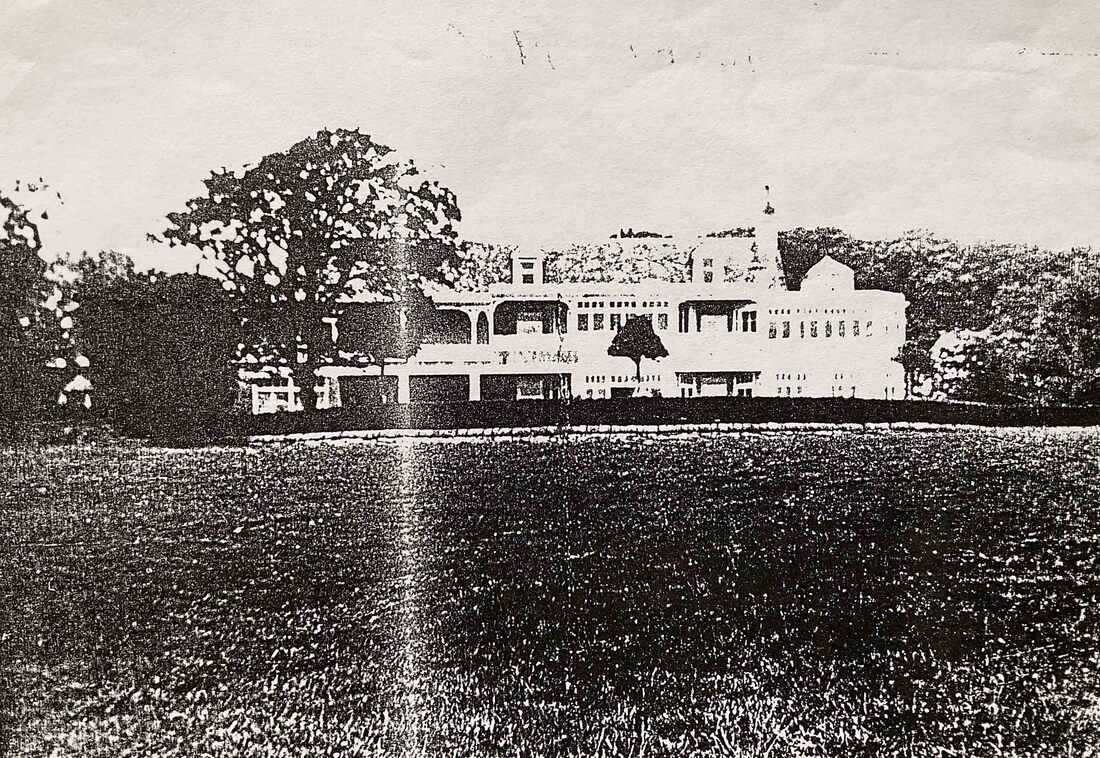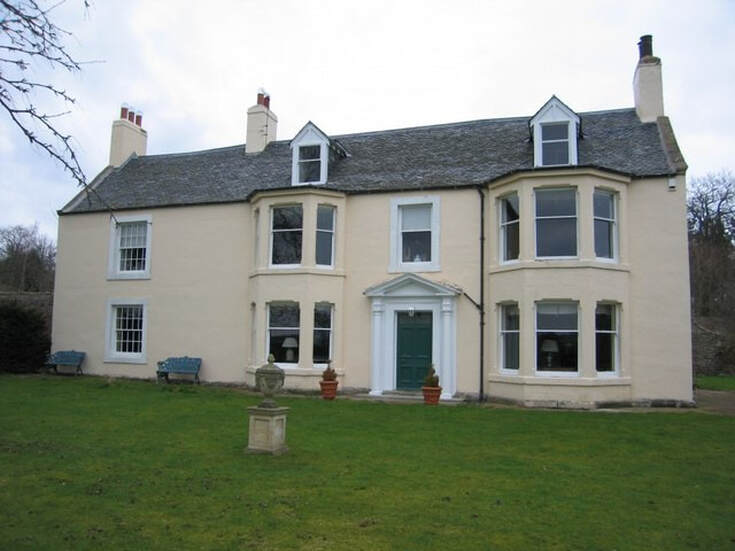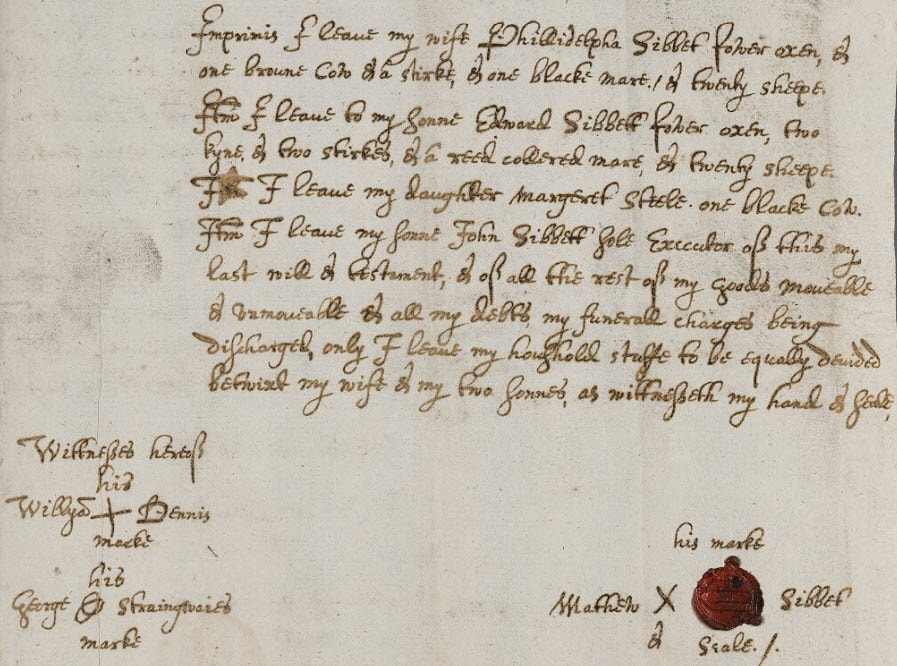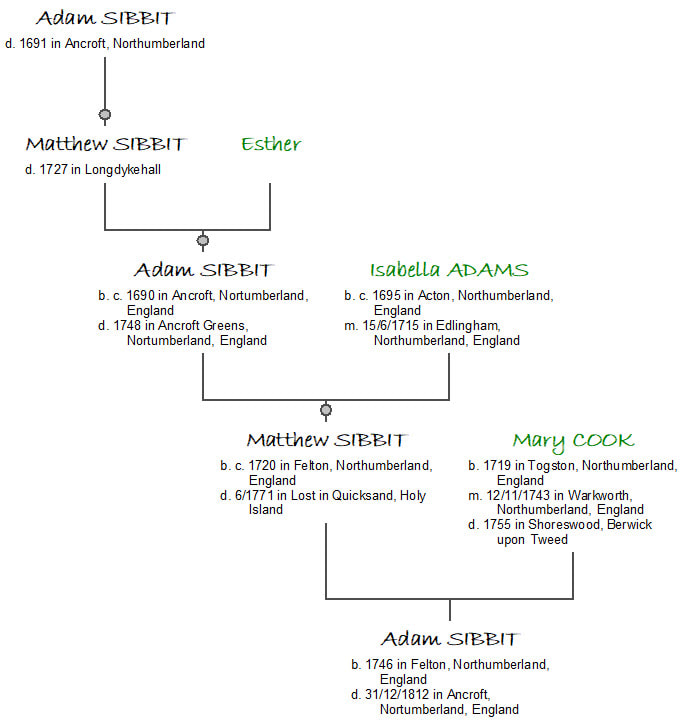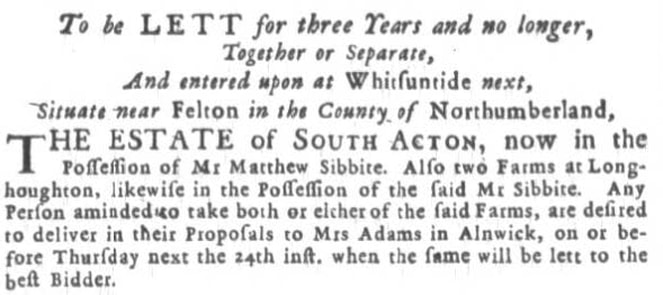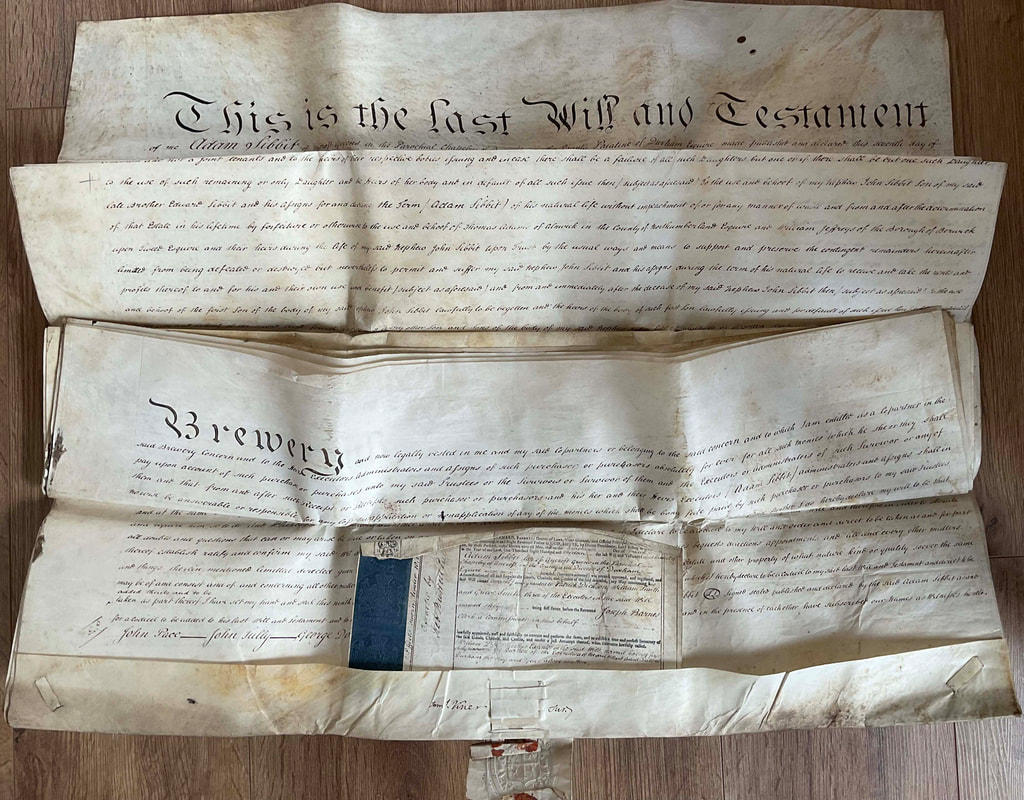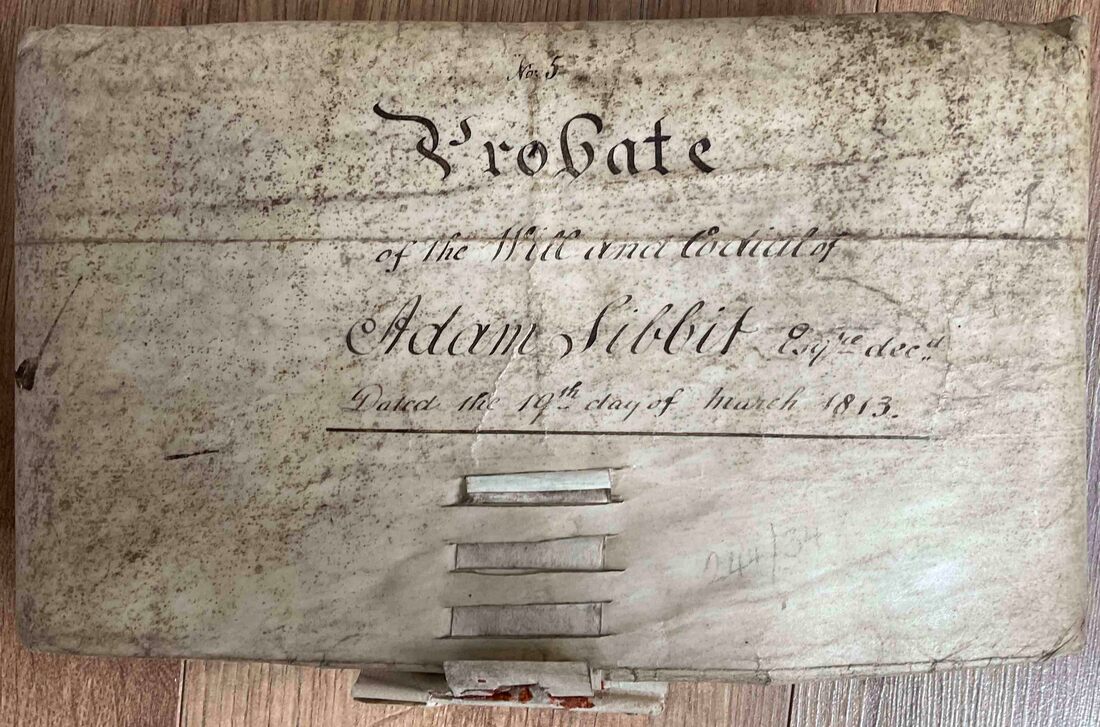Part 1. BackgroundHidden behind a large, padlocked oak door in Ancroft Church is a burial vault containing six lead-lined coffins. It is small with a low vaulted brick ceiling and stone walls. Even with the door open a torch is required to penetrate the intense darkness to reveal the three coffins lying shoulder to shoulder, three to either side. To the left, the heads of the coffins rest in niches cut into the walls, to the right, the stone niches support the feet. The coffins are so close together it is impossible for a person to pass between them or to see what supports them underneath. The original wood of the outer coffins is largely gone, rotted away with time in pitch-black silence and with it any visible means of identifying the occupants if indeed they ever existed. If the supports are also made of wood and as rotten as the coffin casings, there is an overwhelming sense that the slightest knock could send their cargo crashing to the floor at any moment. A scattering of debris and sections from the collapsed wooden sides litter the floor and a couple of scraps of what may once have been a mortcloth remain on the surface of the coffin nearest to the door. So, who are the six individuals sleeping in this cramped space and how long have they lain in what is essentially an above-ground crypt? The church records do not distinguish between burials in the churchyard and the vault and there is no sign of any surviving breastplates that might hold a name, a date or other clue to help identify the occupants. Strange perhaps given a lead-lined coffin would have been a considerable expense. … The engraved breastplate was the most important item and usually the first to be added if a coffin had any fittings at all. [1] But then, if the vault and its occupants all ‘belonged’ to a single family would name plates be required at all? I confess I knew nothing about the burial vault at Ancroft until I was contacted in March last year by local historian Julie Gibbs asking if I was connected to the Sibbit family of Ancroft Greenses. The answer was yes, descendants and relatives of the Smiths of Horncliffe Loanend attached themselves to members of the Sibbit family by marriage not once, or even twice but three times in the same generation! Brothers Robert and James White Smith sons of George Smith of Ancroft, (eldest son of George Smith of Horncliffe Loanend and his wife Christian Trotter), both married daughters of John Sibbit of Greenses House. Robert married Mary Ellen Sibbit a daughter by John’s first wife Catherine Sutherland in 1882 and James married Catherine Sibbit a daughter by his second wife Mary Anne Smith in Edinburgh in 1885. The third family member to marry a Sibbit was a Trotter second cousin, Esther Hislop, who married Adam Sibbit Junior, a medical doctor, at Prestonkirk in 1886. Needless to say, there are more interesting connections too. As a result, George Aynsley Smith did a bit of research into the family and traced the Sibbit family tree back to the mid-eighteenth century. A great foundation to build upon and from some further investigation intriguing stories are coming to light to attach the pedigree framework. But what has this to do with the burial vault? Julie was specifically searching for descendants of Adam Sibbit Esq of Greenses House. In 1810 the Bishop of Durham granted Adam Sibbit the faculty of a burial-ground or vault, within the north side of the tower on the west end of the Chapel; length from north to south eight feet three inches; east to west twelve feet two inches, inside measure.[2] His wife Isabella Yellowly, who died the following year, was likely the first to be placed in the vault and Adam himself joined her in 1812. But so many questions remain; who WAS Adam Sibbit, what was his family’s connection with Ancroft and not least who are the other four individuals in the vault? Included at the end of this instalment are links to some useful sources used along the way. Ancroft Church and links with the Sibbit FamilyIn 1828, Parson and White describe the church at Ancroft as … an ancient edifice covered with red tiles and having a large ash tree growing in the middle of its decaying tower. Though it was anciently a chapel to the curacy of Holy Island it now enjoys the privileges of a distinct parish. And Raine’s ‘The History and Antiquities of North Durham’ contains a more detailed description of the tower. … In one of the stories [sic] is a fireplace, and the lintel of one of the doorways is formed of the lid of a stone coffin disturbed for the purpose, upon which there is a rude carving of a sword. The floors of these upper rooms, which were of wood, fell long ago, and a thriving ash growing out of the stone groining over the ground floor amid their rubbish, vegetates at large like a plant in a pot half-filled with soil, and peers over the parapet. A small bell given by Mr Sibbitt of the Greens (the chapel was before without one), hangs in a small turret on the western wall.[3] Raine continues
Ancroft Greenses – Adam Sibbit’s homeIt is helpful to note that Ancroft consisted of four townships: Cheswick, Scremerston, Haggerston as well as Ancroft itself. Ancroft township contained three villages of Ancroft, Cheswick and Greenses. Until 1843 Ancroft and associated townships lay in Norham and Islandshire that was part of Durham rather than Northumberland as it is today. (A map showing the extent of the Parish is available through the Parish Council Website https://northumberlandparishes.uk/ancroft/map.) Further extracts from the 1828 Parson and White directory describe Ancroft Greenses, the home of Adam Sibbit as … a village in the township of, and 1 ½ miles NW of Ancroft and 4 miles south of Berwick, where there is a large brewery and coal mine called Unthank Colliery of which J Sibbit Esq is the lessee.[5] Adam’s Will, proved in 1813, contains a detailed description of the house adjoining ‘garden, shrubberies, plantations and pleasure grounds’ that enables visualisation of the layout as it was in his day. With additional outbuildings: back kitchen, laundry business, office and room above the office, a four stalled stable and chaise house and a hovel covered with blue slate, two byres, a dove cott, pig houses, calf hovels and a large yard. Together with a large grass field formerly called Wadeup Close and Dove Cott Close then known simply as the Lawn. As well as other business interests, breweries, quarries, collieries etc., the Will also includes details of his other landholdings at Longdykehall, Allerdean and Allerdean Mill. There were periods when the Greenses was let and times the census bustles with the activity of later Sibbit Families, but slowly their numbers dwindled until just three remained in 1891. By 1901 the only residents were a gardener and general servant. Today, the house at Ancroft Greenses is called Allerdean Grange. As well as the name (which changed between 1901 and 1911) the house has seen several transformations and modifications. But today, possibly barring the render, the frontage appears similar to a photograph dating from the 1880s. The pair of bays must have been a contemporary addition as they are absent in an earlier photograph said to date from the 1860s. A set of sale particulars circa 1991 for the house and adjoining cottage show further modifications to the frontage and east gable end. They describe the house as dating from the seventeenth century and state. The properties reputedly have connections with Cromwell and John Wesley and they undoubtedly retain the charm and character of former times … [6] On census night 1911, a Mr Thomas Chisholm, ‘Landowner' of Scremerston was in occupation at the house now Allerdean Grange, suggesting a change of ownership may have coincided with the change in name. Sibbit land Occupation and Ownership at AncroftThe Grey family held the manor of Ancroft from the mid-fourteenth century. …The whole manor of Ancroft so afterwards passed to the Greys of Heaton and Chillingham, in whom it descended till a partition of the estates of that family was made under the following circumstances. Mary Grey, the only daughter of Ford Lord Grey (who died in 1701) and the wife of Charles Bennet, the first Earl of Tankerville, claimed all the estates of her father as his heir. Her uncle, Ralph Grey, Governor of Barbados, who had succeeded to the title of Lord Grey of Wark upon the death of his brother, her father, put in a similar claim under a settlement of his grandfather, William the first Lord Grey. The question after somewhat of litigation was compromised by a partition of the estates. Regardless of the Grey monopoly, pockets of Sibbit ownership at Ancroft begin to appear in documents dating from the mid-seventeenth century. But still earlier links to the village and its surrounds are proven through the Inventory of John Sibbit of Ancroft dated 1631. Administration was granted to his son Matthew Sibbit of Ancroft who in turn died the 8th February 1640. His Will of 1639 provides evidence of his wife Philadelphia, a daughter Margaret, married name Steele, and two sons Edward and John. Son John died at Ancroft Mill in 1682 and his Will names sons Matthew and Thomas, daughters Phillis Archbald, Elizabeth Dodds, Elinor Sibbit and two grandchildren. His Will was witnessed by Adam Sibbit of Ancroft and although the exact degree of kinship between John and Adam is not yet known, they were almost certainly related. This Adam Sibbit died in 1691 and also left a detailed Will. It is from him, that Adam Sibbit of Greenses House and owner of the burial vault descends through a succession of eldest sons. (With Adam Sibbit who died at Ancroft Greenses in 1812, this line of at least five successive generations of inheritance by the eldest son came to an end.) The Estate papers of the Howick Estate, held at Durham University Archives, also contain evidence of Sibbit occupation and bolstering of land holding and farming interests through rental.
This collection relating to the Grey’s Northumberland Estate, referred to as the ‘Howick Estate’ contains important historical information. As well as Ancroft, the estate included farms at Howick, East and West Learmouth, Downham, Presson, Tithe Hill and Howburn on Tweedside and the Chevington Estate south of Howick in mid-Northumberland. … Besides these there were a few more isolated properties such as Cold Martin in the Parish of Chatton, Fleehope in the Cheviots, Burton in the Parish of Bamburgh and Budle on the coast. The records contain …deeds of some of the Northumberland properties which date from the sixteenth century, [including some relating to Ancroft] most of the material falls into the period 1780-1930, but numerous items will be found both before and after these dates. Making them a rich and valuable source for researchers. In addition to Inheritance and Estate information, the newspapers also bear evidence of land, farming and business interests further afield, including Alnwick, Felton and Longhoughton. Doubtless, as research continues, more places, partnerships and interests will come to light. A Bit About AdamAdam was baptised at Felton the 5th June 1746, the eldest son and third of six children, 4 girls and 2 boys. His father was Matthew Sibbit and his mother Matthew’s first wife Mary Cook. Matthew Sibbit farmed at South Acton, near Felton, possibly where he was born, circa 1720. The farm formed part of an estate owned by the Adams family to whom Matthew was connected through his mother, Isabella Adams. At the baptism of Dorothy Sibbit at Norham in 1754, their father Matthew is described as of Shoreswood. This suggests the farm of South Acton was successfully let following an advertisement in the Newcastle Chronicle in 1751. Adam’s mother died when he was nine years old and his father married his second wife Hannah Selby, daughter of Captain Gerard Selby of Beal and Holy Island at Belford in November 1757. The couple provided Adam with a further five half-siblings, although two died in infancy. All the baptisms of this second brood also took place at Norham whilst Matthew resided at Shoreswood and where he remained until his death. An apprenticeship enrolment for Adam’s half-brother Matthew to James Bell Burgess and Merchant of Berwick in 1774, describes Matthew as late of Ancroft Greenses, suggesting the continuation of the family’s interest. In the 1760s, notices advertising the sale of Ancroft Greenses begin appearing in the press, although it was clearly never sold. It is not yet known why, but the notices continue to appear through to 1774, after Matthew was lost in quicksand off Holy Island in 1771. The administration of his estate was undertaken by Adam as his eldest son, along with William Smith of East Newbiggin (of whom more in Part II) and George Robinson of Ancroft. In the renunciation by Matthew’s widow, annexed to the Will she refers to Adam as of Ancroft Greenses. Little is known about Adam’s formative years such as where he was educated etc. but he undoubtedly spent much of his childhood at Shoreswood. To date, the next sighting of him is in the Norham parish register of 1768 where on 3rd June he and Barbara McDugil [sic] of Thornton baptised a daughter Margaret. Little would the 22-year-old Adam have known at the time, but this would be the only child he would father. In November 1773 Adam married his half first cousin Isabella Yelloly at Belford. Isabella’s mother Margaret Sibbit was half-sister to Adam’s father Matthew Sibbit as the pair shared a mutual grandfather in Adam Sibbit senior. In 1794 Adam and a member of the Yelloly family were noted to have interests in Maltings and Brewery in Walkergate, Alnwick. This would be in addition to his other interests in a large Brewery at Berwick. Adam and Isabella were married for 38 years but the union was not blessed with children. Isabella pre-deceased her husband by a matter of months. She died at Ancroft in April 1811 and he on Old Years Night in 1812. Yet he still found the time to marry again in the intervening period. His second wife Hannah Brankston was aged 43 at the time of her marriage, some 22 years her husband’s junior. So, although still possible to bear a child, her age at marriage suggests the desire for an heir was not an overwhelming factor. In terms of tracing his closest blood relatives, his illegitimate daughter Margaret and her children are his only known direct descendants. Margaret and her husband Robert Dunlop are mentioned in Adam’s Will, although her mother is named Barbara McDonald rather than McDugil [sic] as per the Norham Register. She also received a small bequest I also give and bequeath unto Margaret Dunlop Daughter of Barbara McDonald and now the wife of Robert Dunlop of Slainsfield in the Manor of Etal and County of Northumberland Colliery Agent or Bankman the sum of five hundred pounds of lawful money.[11] As did her children, to be paid when they reached 21 years of age … Then I do hereby give and bequeath the said legacy or sum of £500 to all and every of the Children of the said Margaret Dunlop in equal proportion share and share alike… Indeed, Adam’s Will comprehensively encompasses many of his remaining relatives. I find myself warming to him as I read as he leaves provision for many of his siblings nieces and nephews. One of the main beneficiaries under his Will was Robert Sibbit, eldest and ‘the natural son’ of his brother Edward. There will be more about the pedigree, the people and their stories at the end of next month in Part 2. Some of whom have taken a globe-trotting route back to Tweedside - think Scotch Herrings ‘in prime order’, barrels of salt beef, pork and ox tongues by the half keg shipped from London and Cork on sale in Jamaica in 1793... To be continued ... Footnotes & Links[1] Sarah Hoiles, ‘Early Victorian Coffins and Coffin Furniture’
https://cemeteryclub.wordpress.com/2013/11/07/early-victorian-coffins-and-coffin-furniture/ [2] WM Parson and WM White, Vol II of the History, Directory and Gazetteer of the Counties of Durham and Northumberland etc., 1828 https://archive.org/details/bub_gb_MbA3AAAAYAAJ/mode/2up [3] ‘Monumental Inscriptions. On a monument affixed to the north wall of the nave: “Sacred to the memory of Isabella, wife of Adam Sibbit, Esq. of Greenses House, who departed this life April 7, 1811, aged 64 years. Also, to the memory of Adam Sibbit, Esq who closed an industrious and benevolent life the 31st day of December 1812, in the 67th year of his age’. Rev James Raine, The History and Antiquities of North Durham, 1858. [4] Rev. James Raine, The History and Antiquities of North Durham, 1858. P.217 [5] WM Parson and WM White, Vol II of the History, Directory and Gazetteer of the Counties of Durham and Northumberland etc., 1828 https://archive.org/details/bub_gb_MbA3AAAAYAAJ/mode/2up [6] Berwick Record Office, (BRO 1016/4) Particulars relating to the sale of Allerdean Grange circa 1991. [7] Rev James Raine M A, ‘The History & Antiquities of North Durham’, London, 1852. [8] Durham University Archives, GRE/X/P75, 1734-1762, Farm Leases. [9] Durham University Archives, GRE/X/P79 , 1802-1845, Farm Leases [10] Durham University Archives, Estate records of the Earls Grey and Lords Howick 1522-1980. https://reed.dur.ac.uk/xtf/view?docId=ark/32150_s1gf06g268w.xml [11] North East Inheritance Database, (DPR/I/1/1813/S7/1-27) http://familyrecords.dur.ac.uk/
5 Comments
|
AuthorSusie Douglas Archives
August 2022
Categories |
Copyright © 2013 Borders Ancestry
Borders Ancestry is registered with the Information Commissioner's Office No ZA226102 https://ico.org.uk. Read our Privacy Policy
